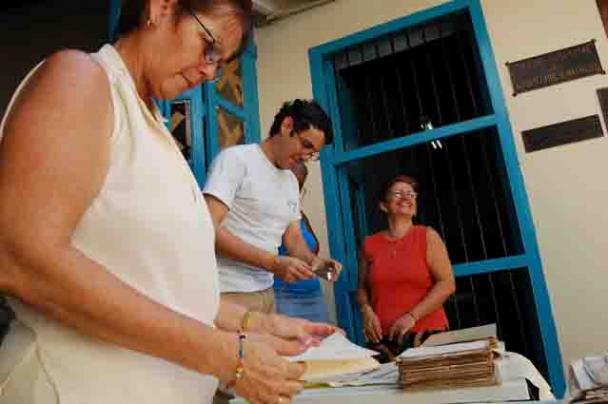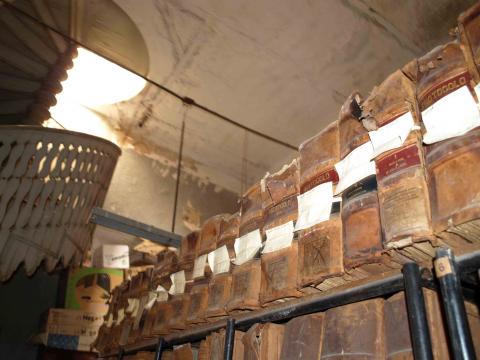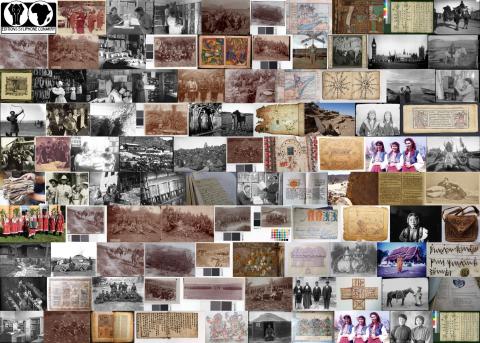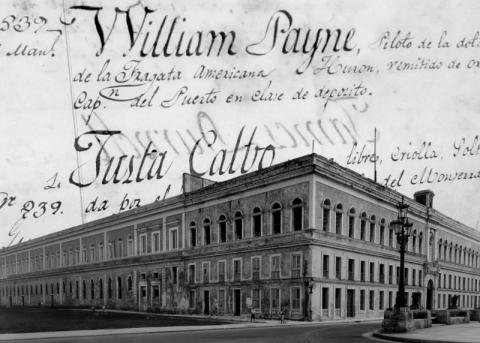
Aims and objectives
During the nineteenth century, Matanzas became the centre of Cuban sugar production, which influenced a high demand for slave labour. The territory became the major destination for African slaves in Cuba. This explains why Matanzas currently holds the most valuable documents related to the history of enslaved Africans and their descendants in Cuba. Matanzas' records are among the longest serial data available for the history of Africans in Cuba. The region's archives are very rich in all kind of information on the African populations living in Matanzas, beginning in the early 16th century to the end of the 19th century, including demographic statistics, information on ethnicity, resistance, occupations, property, economy of free and enslaved Africans, etc. Colonial Spanish administration, churches, estates, and notaries offices originated this documentation.
These materials are unique and their condition perilous. Most of the collections are about to disappear, due to the extremely bad conditions in which they are deposited. Cuba's weather is hot and wet, which makes conservation a difficult task. Matanzas' archives lack financing and therefore do not have access to the necessary technology. The reality is that the vast holdings of this region are deteriorating at an alarming rate. Nature and negligence are together creating an urgent need to rescue this important part of Cuban and slavery history. Conservation work and infrastructure reform at the Matanzas' archives would take much time and resources. Unfortunately, in the short and middle term, the only strategy available at the Matanzas' archives is digitisation.
The main objective of the Pilot Project will be concentrated in exploring the most important archives in Matanzas Province, Cuba, containing the most important collections on African slaves and their descendants. These archives are: 1) Archivo Provincial de Matanzas, 2) Archivos Parroquiales de Matanzas, 3) Archivo Histórico Municipal de Cárdenas, 4) Archivo Histórico Municipal de Colón.
The Pilot Project would identify the bodies of endangered, rich, under-utilised, and at-risk documents on Africans and persons of African descent in the archives above mentioned. It would focus on training in digitisation techniques to the staff on the archives above mentioned. During this phase, some of the documents already identified would be digitised.
The Pilot Project would also generate a detailed inventory of the documents identified as at risk. The digitisation of some of these documents would be continued to carry out, as a continuity of the training process of the archival staffs. This would facilitate the feasibility of a future major project of digitisation of all the material already identified.
The final objective would involve the creation of a database with all the material identified and all the documents digitised. The database and copies of all the material would be delivered to the British Library and the archives involved in the Pilot Project.
Outcomes
During the project, under the supervision of the grant holder, a local research team was organised to carry out works at the archives of the province of Matanzas in Cuba. The team was pleased that some major accomplishments had been achieved by the end of the grant period.
At the three archives where works were performed, the team identified bodies of endangered, rich, under-utilized, and at-risk documents on Africans and persons of African descent.
The pilot project’s staff spent some time teaching the basics in the use of digital cameras and computers to staff in the archives.
The documents digitized at the archives were carefully indexed, facilitating the feasibility of a future major digitisation project of all the material already identified. In this first stage, some of the collections identified were listed due to the fact that most of them have never been inventoried. The listing will be continued during a future major project.
Approximately 48,000 files were identified as endangered, rich, under-utilized, and at-risk on Africans and persons of African descent. Due to the deteriorating conditions of the documents identified by this project they must be digitised soon otherwise they would be lost forever.
A total of 4,360 digital images were created and indexed as an outcome of this pilot project.
The records copied by this project have been catalogued as:
- EAP060/1 Fondo Gobierno Provincial de Matanzas
- EAP060/2 Fondo de la Catedral de Matanzas
Survey results (PDF document 120KB)
Due to the cyber-attack on the British Library in October 2023, the archives and manuscripts database is currently inaccessible and we are unable to provide links to the catalogue records for this project.





